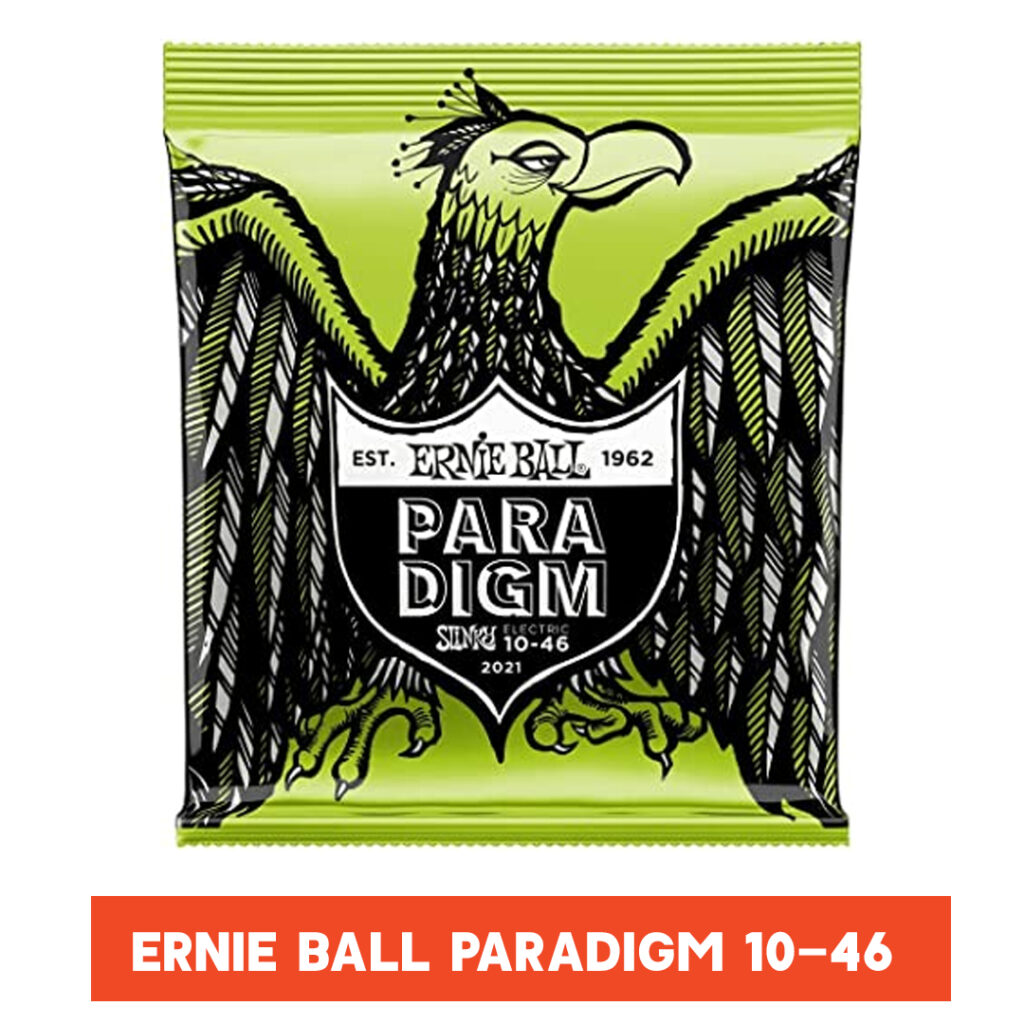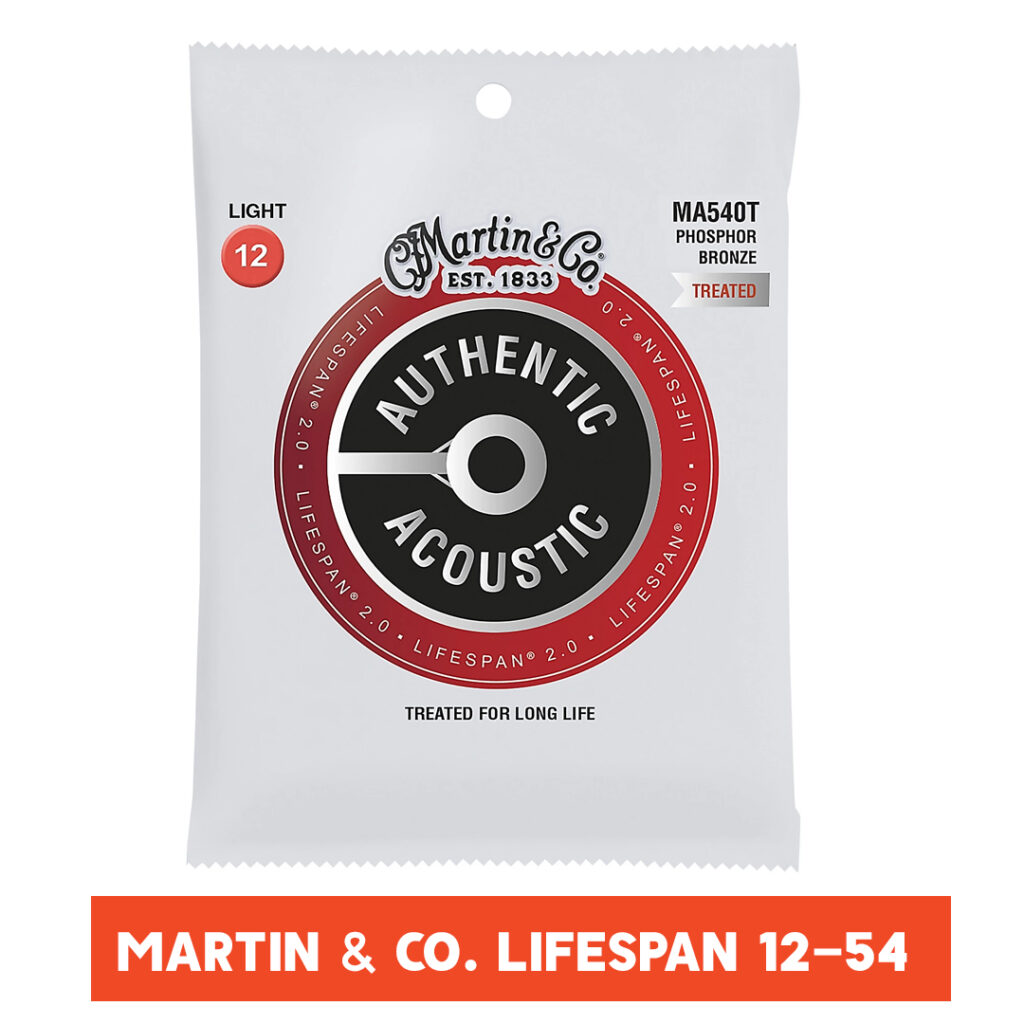It can be tough to know which guitar strings are right for a beginner. Not all strings are created equal, and the wrong type of string can make learning how to play the guitar more difficult than it needs to be. Let’s take a look at the best guitar strings for young beginners and explain their benefits and why they’re ideal for new players. So if you’re just starting out, read on to learn more!
Electric Guitar Strings

1: D’Addario NYXL
These strings live forever. The tone lasts so much longer than regular steel strings and I feel like they never break making the D’Addario NYXL one of the best guitar strings for beginners. They cost a little more than the average set, but the value is well worth the price. Longer lasting tone and durability mean less time changing strings and more time playing.
Recommendations:
Kids: NYXL 9-42
Adults: NYXL 10-46

1: Ernie Ball Paradigm
The Ernie Ball Paradigm also comes in at number one as one of the best guitar strings for beginners with the NYXL because they are on the same level as far as durability and the lasting tone goes. In fact, one of the earliest ads for these strings was John Petrucci yanking the life out of the strings in an effort to break them. The NYXL and Paradigm were released roughly at the same time and I love the way Ernie Ball strings come out of the package feeling like they’ve already been broken in.
Recommendations:
Kids: Ernie Ball Paradigm 9-42
Adults: Ernie Ball Paradigm 10-46
2: Ernie Ball Slinky
These strings are more classic than the sandwich and chip lunch your mom would make you when you’d have people over for the pool.
The Ernie Ball Slinky is the perfect beginner guitar string for a couple of reasons. They are excellent strings at an excellent price AND come in so many different set gauges. The cool thing is they are available in a very light set meaning they’ll be easier on your fingers. Lighter gauge sets tend to be favorite gauges for beginning guitarists.
As you develop your skill on the guitar may want to check out how other gauge sets feel and sound, having the amount of variety that Ernie Ball has just makes it super easy knowing you’ll consistently have a quality string to play with.
Recommendations:
Kids: Ernie Ball Extra Slinky 8-38 or Ernie Ball Slinky 9-42
Adults: Ernie Ball Slinky 10-46
3: D’Addario XL
Long live the D’Addario XL! I remember using these all the time when I was a young player. They’re a consistent string with relatively long life and amazing value for the price.
Recommendations:
Kids: D’Addario XL 9-42
Adults: D’Addario XL 10-46
Acoustic Guitar Strings

1: Martin & Co. – Authentic – Lifespan 2.0
Martin & Co. is one of the most reputable brands in the acoustic guitar industry and builds some of the best steel string acoustic guitars available – so it’s only natural to include them on the short list of best strings.
Recommendations:
Adults: Martin Authentic – Lifespan 2.0 12-54
Kids: Martin Authentic – Lifespan 2.0 10-47
2: D’Addario 80/20 Bronze
Of course, D’Addario would be mentioned again in a post about guitar strings. These strings last long and their tone is very natural and for lack of better words “earthy”. As primarily an electric player, I tend to favor lighter gauge string sets as its easier to play and allow me to transition from electric to acoustic without having to “get used to” the strings.
Recommendations:
Both Kids & Adults: D’Addario 80/20 Phosphor Bronze 10-47
When to Change Your Strings
Oddly, any time I get asked how often someone should be changing his or her strings, their response to the answer is always “ohhhhhh really?!” and I can see why.
Changing strings, well….guitar maintenance in general, isn’t a glorified part of “rocking out”. But it’s necessary to make sure your instrument is always playing as well as it can, thus inspiring you to practice more, annnnnd subsequently making you a better player. Yaayyy!
Your hands can carry dirt, dust, oil, and moisture and all of this can end up on the strings and fretboard, causing oxidation on the strings and making the strings rough, which can cause some ouchies when moving up and down the strings. You want to change your strings out before this happens.
Older strings sound blah. They eventually lose their tonal shine and spank which is on the treble side of the sound spectrum. Touring guitarists change their strings as frequently as every day but they also often have a guitar tech whose sole job is to make sure all of the guitars on tour are in excellent playing shape. Since most of us don’t have a dedicated tech at home we’ll have to keep an eye on the string condition.
A good rule of thumb is to watch out for when the physical shiny-ness of the strings starts to wear off and your strings start to look grey. They’ll inevitably fade into a dark grey, but change your strings before they get rough.
How to Make Your Strings Last Longer
Sheesh, this is a tough one.
I’ve always made sure to keep my hands clean of any oils, dirt, and moisture. Before picking up the guitar, I make sure to wash my hands with hand soap and make ensure they are completely dry before placing my hands on the neck.
If your hands sweat more than others, gently pat down the guitar and fretboard with a dry cloth after a practice session or performance before putting it back in the case or stand. This will help extend the life of the strings.
The Wind Down
With strings becoming available with so much variety, gauge sets, materials, brands, etc., it’s never been easier to find a set of strings that you love. On the flip side, with so many options on the market it can become difficult to decide on which strings to buy.
I hope this short list has made your search easier. Having all the necessary tools to keep your practice sessions rolling smoothly is always a rad idea.
Happy practicing.




